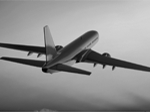Fall 2013 is seeing a lot of governance activity around ULD management, with active discussions on many important ULD related issues.
During the first half of this year, considerable background work was undertaken on the 2nd Edition of the IATA ULD Regulations. This work consists of a mix of tidying up some of the material from the first edition, reformatting some material brought across from the previous ULD Technical Manual, and adding some totally new material. Early next year, once the 2nd Edition is published, ULD CARE will be bringing you a detailed guide to the changes. In the meantime, here are a few highlights:
The current regulatory focus is on two major issues – cargo fires and the restraint of special cargo. The 2nd Edition will incorporate new material on both subjects.
For example:
Fire Containment Covers ( FCC) will be included at both the design and operating specification level as well as being covered under Section 9 – Handling. With at least two airlines now implementing the use of these expensive and safety critical items, it is essential for the whole air cargo industry to play a role in ensuring that FCC’s are used and cared for correctly.
Restraint of heavy cargo is also a highlighted subject. In the aftermath of the National Air Cargo crash earlier this year – with two Safety Alert for Operators ( SAFO) issued by the FAA, and a great deal of background discussion in process, the final picture remains unclear. However, the 2nd Edition will contain revised material on the restraint of special cargo.
In addition to these two subjects, both triggered as a result of accidents, the 2nd Edition of the ULDR will contain:
- Revisions to the Other Parties’ Responsibilities (Section 1.5),
- Reformatting of the tables found in Standard Specification 40/1 (Section 4), and
- Additional material on messaging formats in Section 8. This will incorporate: Material on the ULD Control Receipt and Details from the AHM on the standard Stock Control Message.
These changes and many others were presented and discussed at a two day IATA ULD Panel meeting held in Hong Kong in September. At this meeting, a proposal to amend the current format used for ULD identification (e.g. AKE12345ZU) was submitted. This would allow the fourth position to be either a numeral or a letter, adding the possibility for 24 letters to be used to identify different sub-types of ULDs. Once certain internal IATA procedures have been processed, these changes will be published in the 2nd Edition of the ULD Regulations. This will create a new method for airlines and ULD owners to identify special groups of ULDs, for instance, lightweight units.
Two IATA ULD Regulation Workshops and one three day IATA ULD Training session were held in conjunction with the ULD Panel meeting in Hong Kong
The training session was delivered by Jardine Aviation Services. It attracted participants from airlines, ground handlers, cargo terminal operators and ULD service providers and gave an in-depth understanding of ULD handling procedures. The ULD Regulations workshop is a newly developed program designed to expand the understanding of the purpose and value of ULD regulations to as broad a group of industry participants as possible. One workshop was held in Hong Kong and one in Guangzhou, China. More such workshops are planned to increase awareness.
Furthermore, the 2013 meeting of ISO TC9 was held in Stockholm from October 22nd to the 24th. This group is working on important developments such as a new standard for Fire Resistant Containers.
Finally, early in February 2014, IATA will host a ULD Regulations Workshop in Geneva. The FAA is expected to attend this event.
As we move into the last few months of this year, it is clear that a great deal of progress has been made in the ULD “area”. It also seems clear that 2014 will be an equally busy year! ULD CARE will continue to keep you informed of new developments.


